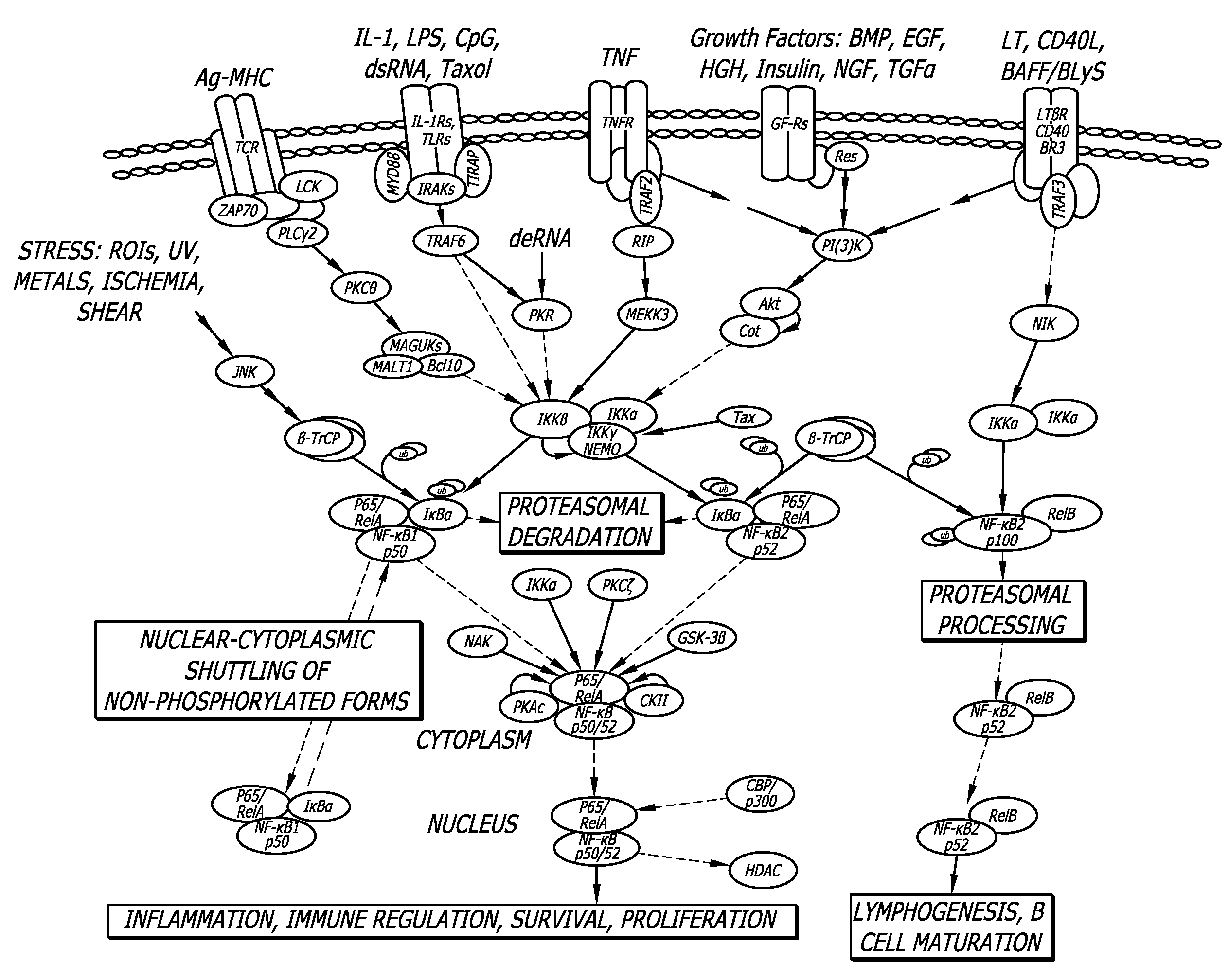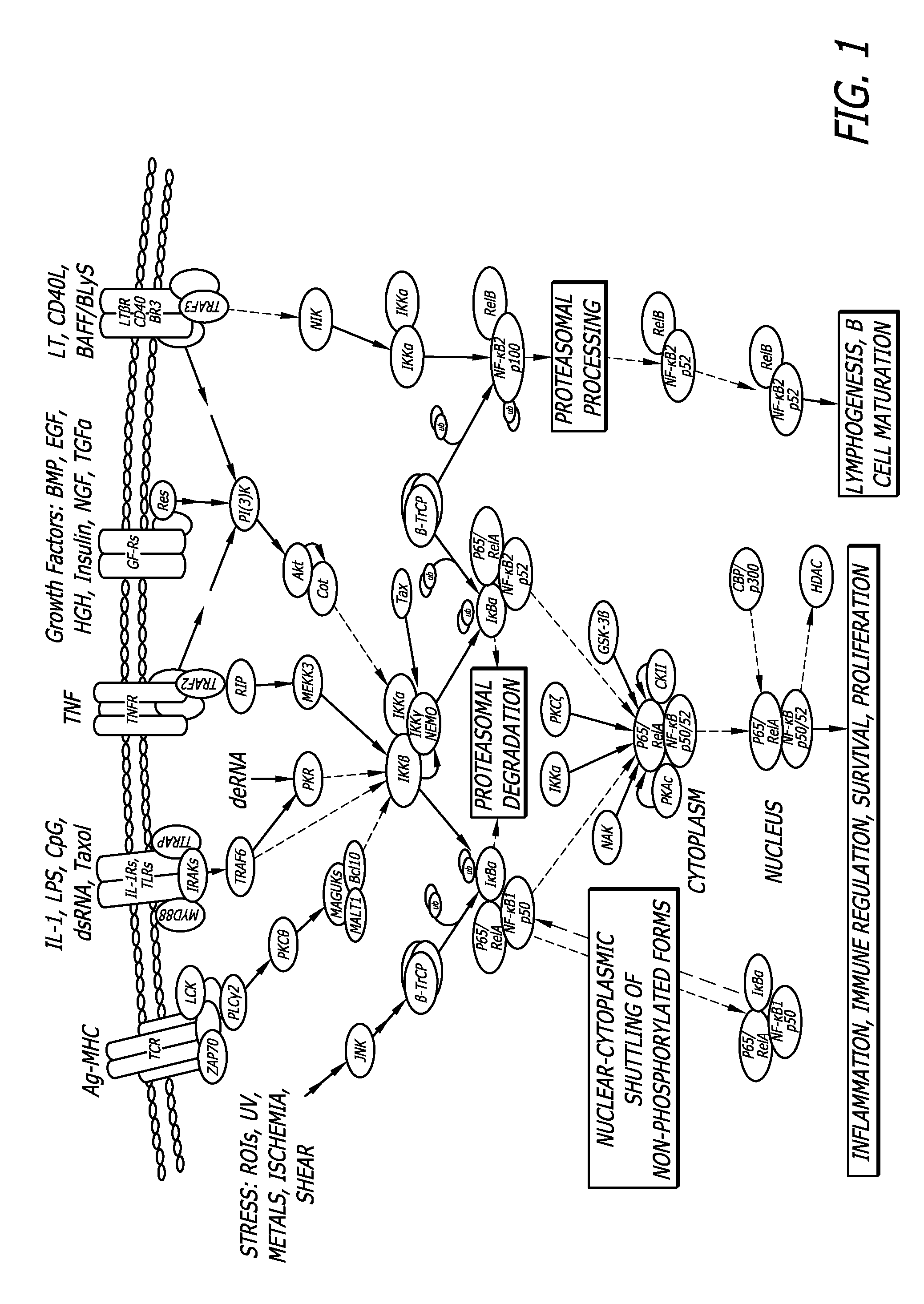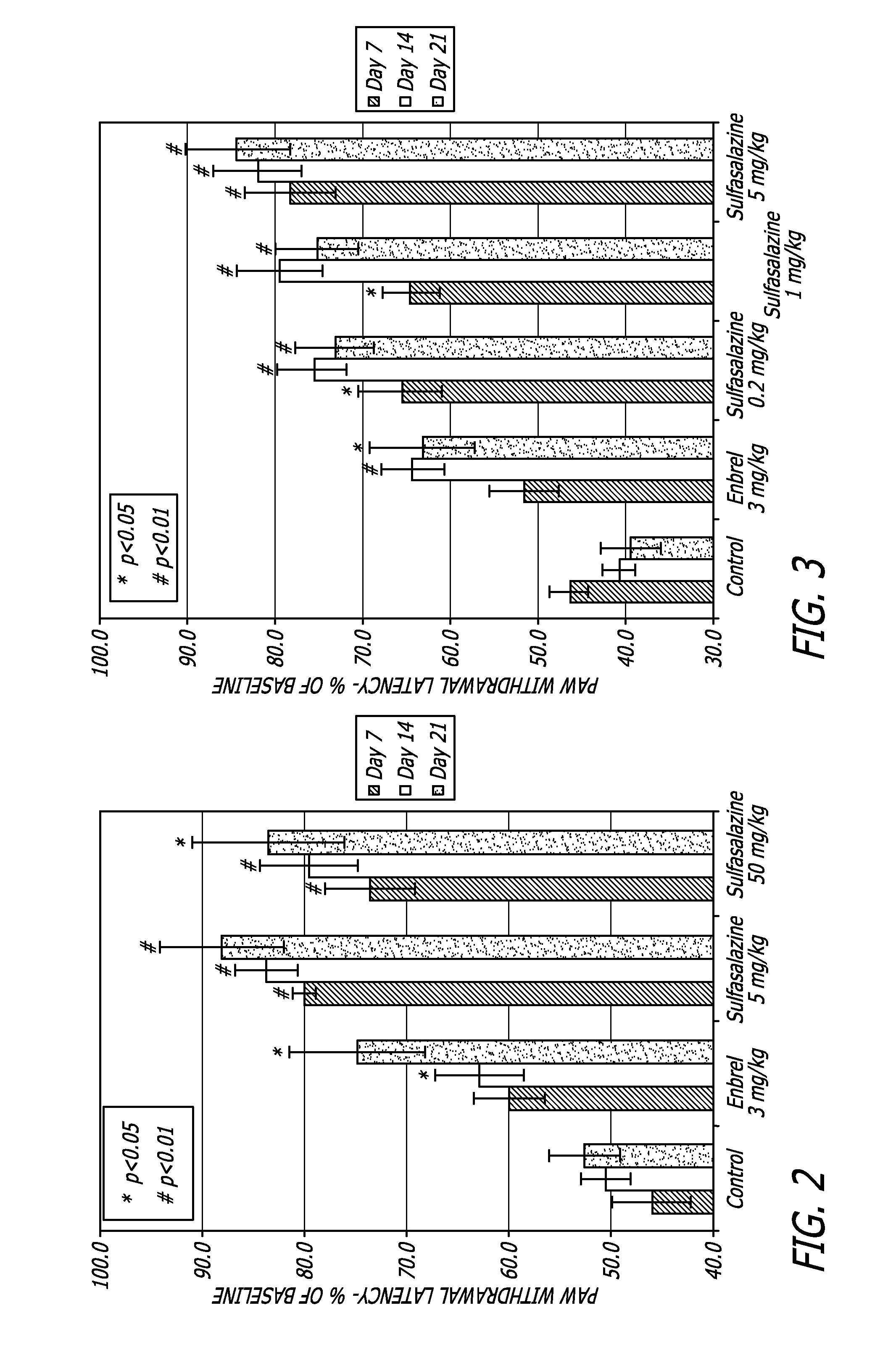Systems and Methods to Treat Pain Locally
- Summary
- Abstract
- Description
- Claims
- Application Information
AI Technical Summary
Benefits of technology
Problems solved by technology
Method used
Image
Examples
example 1
[0036] Animals were randomly assigned to treatment groups and administered control or test compounds as follows: animals received either vehicle (Phosphate Buffered Saline; PBS), the protein-based TNFα inhibitor, Enbrel® as a positive control (3 mg / kg Immunex Corp., Seattle, Wash.) or sulfasalazine, a small molecule inhibitor of NFκB at a dose of 5 mg / kg or 50 mg / kg.
[0037] Animal behavioral testing was conducted on Days 7, 14 and 21 after CCI. In the thermal hyperalgesia test, animals were placed in the clear plastic chamber of a plantar analgesia instrument and allowed to acclimate to the environment for 15 minutes. After the acclimation period, a radiant (heat) beam source stimulus was applied to the CCI hind paw of each animal. The heat source device was set at an intensity of 50, and a maximum latency period of 15 seconds was set to prevent tissue damage according to the recommendations of the instrument manufacturer. If a paw withdrawal occurred within the 15 second period, an...
example 2
[0039] In a subsequent study, additional lower doses of sulfasalazine were evaluated for their effectiveness as a pain treatment using the CCI model. Specifically, the same methods as described above were used except that sulfasalazine was administered at doses of 5 mg / kg; 1 mg / kg or 0.2 mg / kg. As can be seen in FIG. 3, control animals receiving vehicle showed paw withdrawal latencies averaging an increase of about 45%, 41% and 39% over baseline on test days 7, 14 and 21 respectively. Positive control animals receiving the protein-based TNFα inhibitor, Enbrel® increased paw withdrawal latencies to about 51%, 63% and 62% over baseline on test days 7, 14 and 21 respectively. Again, however, all doses of sulfasalazine increased paw withdrawal latencies on all test days even further (to an average of between about 65% to about 85% over baseline measures on all test days), again suggesting that sulfasalazine and NFκB inhibition can provide an effective pain treatment. Indeed, this data s...
example 3
[0040] The ability of sulfasalazine to inhibit pain was also evaluated using a different sensitivity measure following CCI, namely mechanical (or tactile) allodynia. In this study, mechanical allodynia was determined in reaction to probing with von Frey filaments (Stoelting, Wood Dale, Ill.). Mechanical sensitivity was measured on Days 8, 15 and 22 following CCI by determining the median 50% foot withdrawal threshold for von Frey filaments using the up-down method described in Chaplan et al. (J Neurosci Methods 1994; 54:55) which is incorporated by reference herein for its teachings regarding the up-down method. Rats were placed under a plastic cover (9×9×20 cm) on a metal mesh floor. The area tested was the middle glabrous area between the footpads of the plantar surface of the injured hind paw within the L4 innervation area. The plantar area was touched with a series of 9 von Frey hairs with approximately exponentially incremental bending forces (von Frey values: 3.61, 3.8, 4.0, 4...
PUM
 Login to View More
Login to View More Abstract
Description
Claims
Application Information
 Login to View More
Login to View More - R&D
- Intellectual Property
- Life Sciences
- Materials
- Tech Scout
- Unparalleled Data Quality
- Higher Quality Content
- 60% Fewer Hallucinations
Browse by: Latest US Patents, China's latest patents, Technical Efficacy Thesaurus, Application Domain, Technology Topic, Popular Technical Reports.
© 2025 PatSnap. All rights reserved.Legal|Privacy policy|Modern Slavery Act Transparency Statement|Sitemap|About US| Contact US: help@patsnap.com



